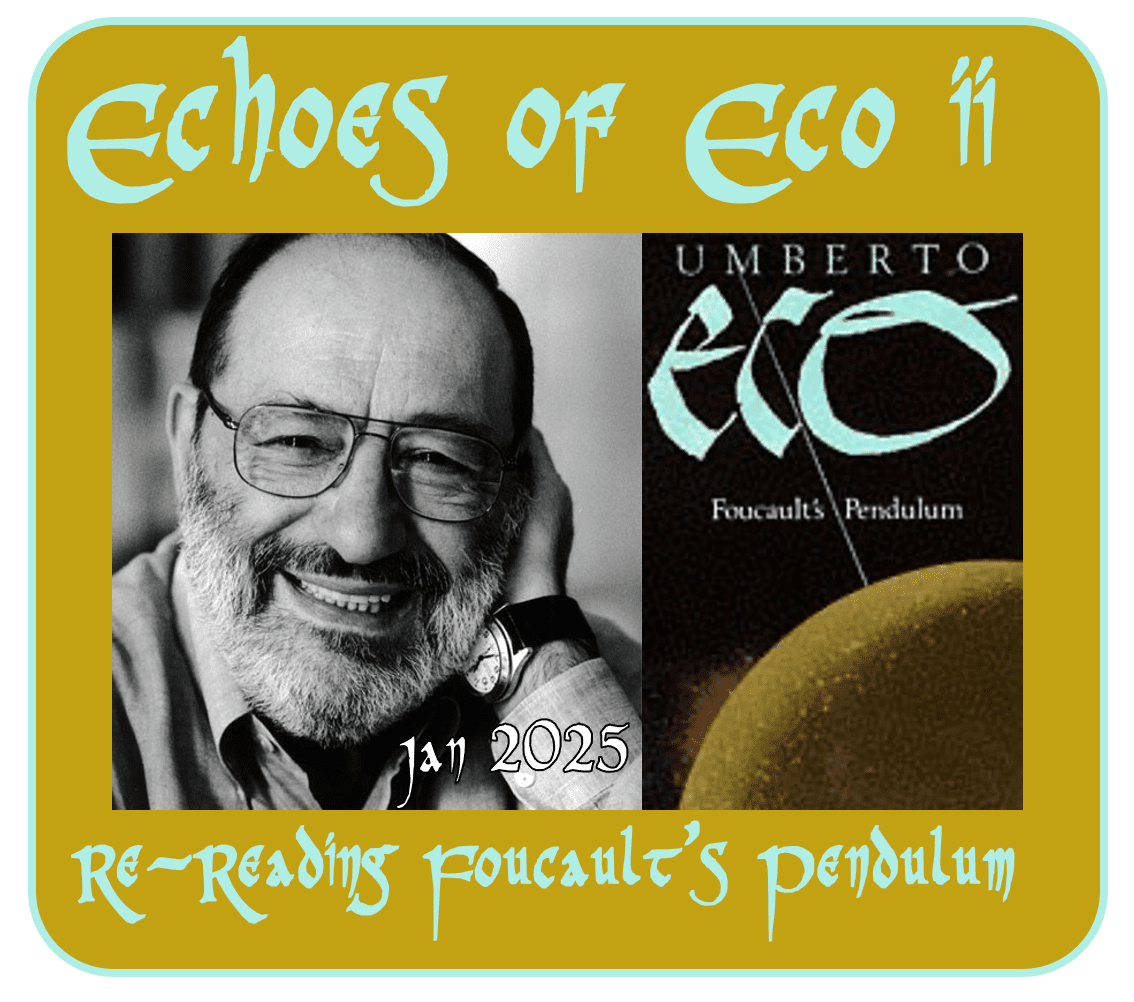
My original plan for this readalong was to polish the book off in about 3 chunks in January. But, having started it this morning, having read the first short section of just 18 pages (in my old Picador edition), my mind is already reeling, so I think I’m going to extend into February, having a week off for my Paul Auster Reading Week (3-10 Feb).

Those who read of my quandary in my announcing post back in November on whether to unshrinkwrap (or is deshrinkwrap better?) my prized and rare Folio Society edition, worth several hundred quid now. Well, I decided life’s too short and went for it! So I can share photos of some of the illustrations with you as we go. They are by Nick Packer, who illustrated the Folio The Name of the Rose too.
This Frontispiece shows the four main characters: Casaubon (top right), Belbo, Diotallevi and Agliè, surrounding a diagram of the kabbalistic tree of life, with the ten sephirot and the paths linking them. I confess, I am illiterate in the Kabbalah, so hope to learn lots from the novel in that respect. The novel is written in ten parts, one for each of the sephirot. The first is ‘Keter’ the crown, symbolising divine will and the urge to create, and represents pure consciousness.
A few thoughts on the first section: Keter
Eco’s novel may be intensely literary, full of intertextual references, and the aforementioned Kabbalistic ones, but it is a thriller, and this is evident from the start. Casaubon enters the Musée des Arts et Métiers in Paris (I can’t believe I’ve never visited it!) and stops to marvel at their Foucault’s Pendulum.
The Pendulum told me that, as everything moved – earth, solar system, nebulae and black holes, all the children of the great cosmic expansion – one single point stood still: a pivot, bolt, or hook around which the universe could move. And I was now taking part in that supreme experience.
He listens in to a boy and girl talking about it, the boy ‘trained on some textbook that had blunted his capacity for wonder,’ mansplaining to an uninterested audience. Casaubon however, is convinced that his colleague Jacopo Belbo was right about ‘the Plan, the Universal Plot.’ and that he is in the right place at the right time, the summer solstice, to find answers.

He looks for a place to hide to wait until ‘They’ come. Here Eco describes the contents of some of the following rooms of the museum, full of old vehicles, planes hanging from the ceiling. The language is rich: ‘the chthonian world of gas guzzlers’, ‘cranks that threaten indescribable tortures.’ He is fearful of hiding among the vehicles, which seem like animals, with ‘heavy, telluric breath … fetid with black-grease drool’.
Moving into the next gallery, he discovers the ideal hiding place – a periscope, with a view to the outside world, and a chamber large enough to house a man. He settles in for the wait, remembering what his colleague Diotallevi said about what Keter represented.
And there the first section is complete. We’ve been introduced to Casaubon; whether he’ll resemble George Eliot’s pompous scholar at all is yet to be seen. We have experienced awe and wonder. Crucially, we are already on tenterhooks to find out what the ‘Plot’ is, who ‘They’ are. We’ll have to wait for the outcome of Casaubon’s lonely wait, for the next section ‘Hokhmah’ takes us back in time a bit…
Well, I’m hooked already! I’m loving Weaver’s translation which preserves the richness of Eco’s language. I will probably report back again in a week or so after the next two sections (up to p159 in the Picador paperback). Do share what you think too…







